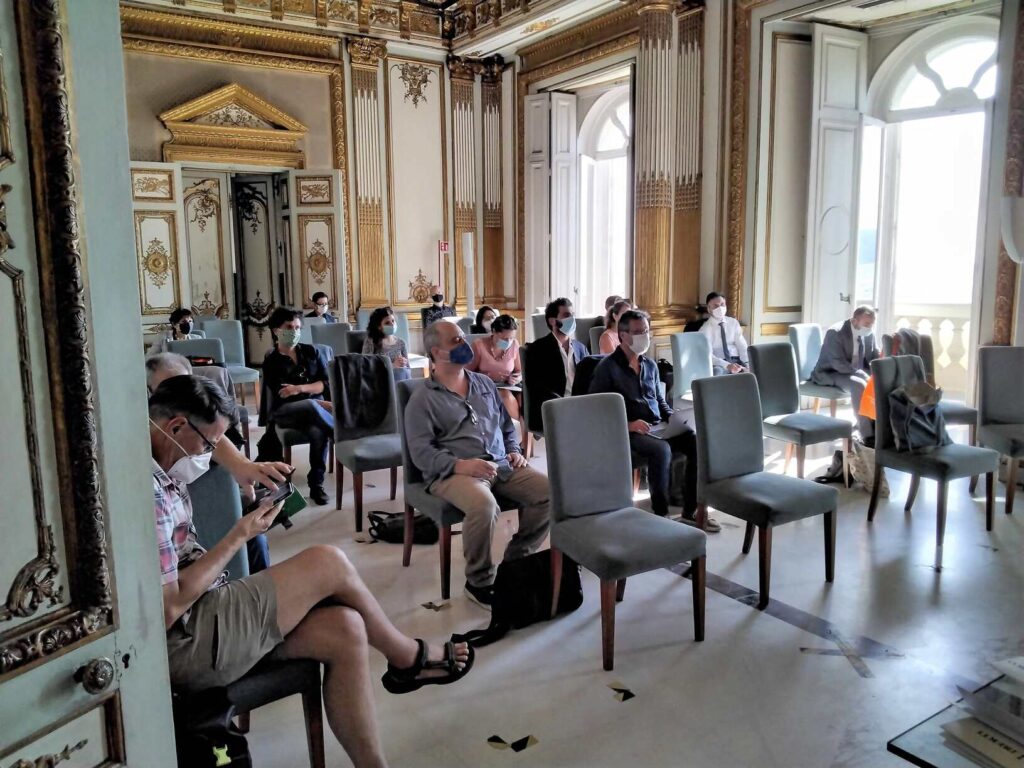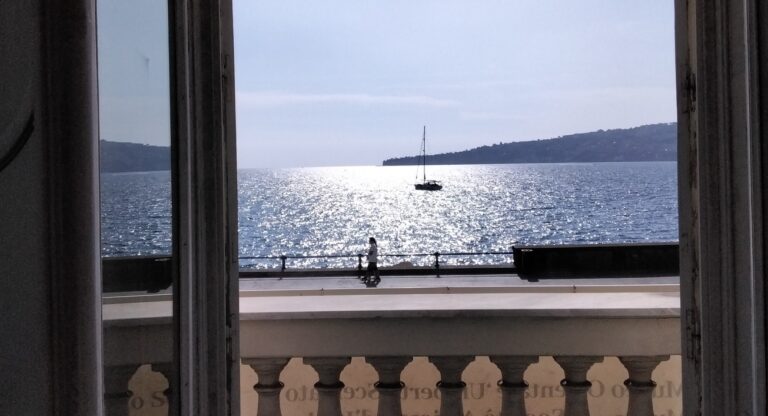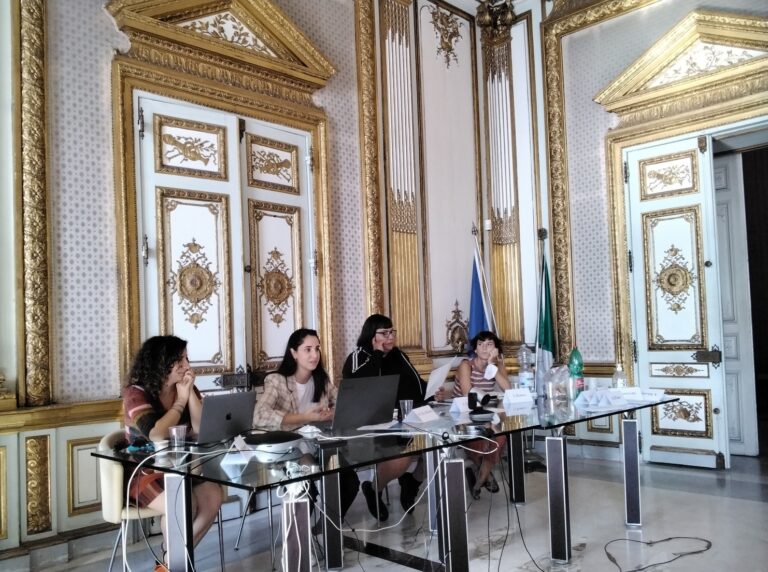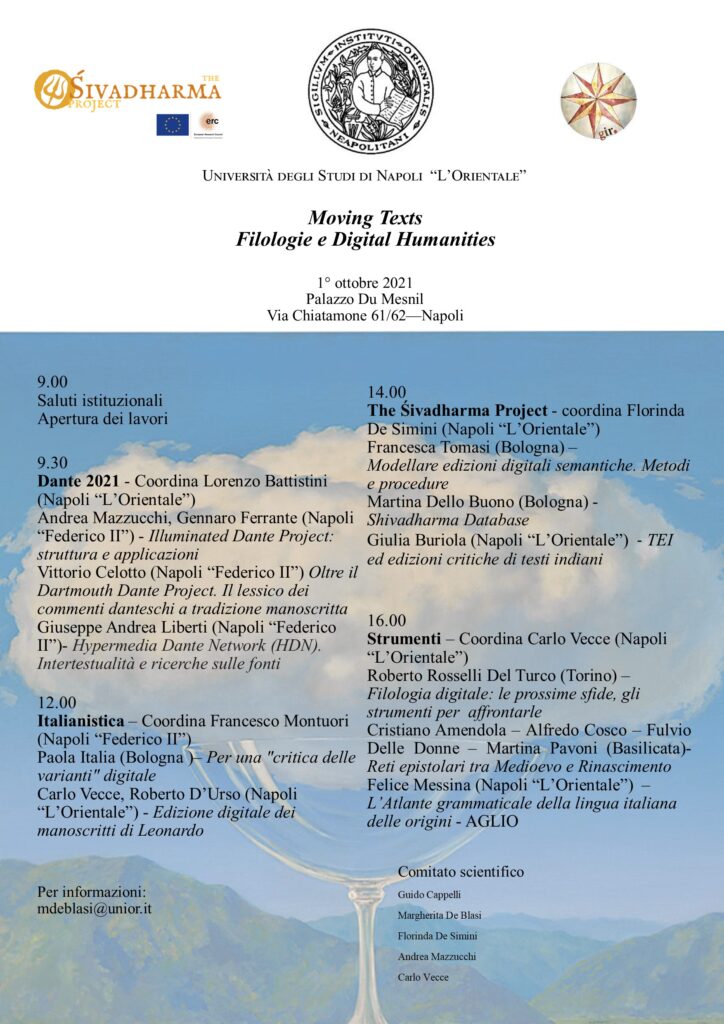
On October 1st, in the stunning location of Naples’ seafront promenade at Palazzo du Mesnil, L’Orientale University hosted the conference “Moving Texts: Filologie e Digital Humanities”. Organized by the department of Italian studies, the conference sought to offer an interdisciplinary platform to debate new methods of research in the field of digital humanities, bringing in new challenges in the way we interpret, understand and preserve world manuscript cultures.
We, as The Śivadharma Project, are happy to have taken part in this extremely enriching day of exchange and interaction. The broad scope of the interventions – ranging from the digitization of Italy’s medieval and early modern manuscript culture to India’s Śivadharma corpus – was noteworthy, in that it aspired to connect philologists working on vastly different cultural and linguistic areas and textual cultures in a comparative outlook, in order to share the tools and technologies of digital research.

In this framework, in the opening speech the pro-rector and scholar of Spanish literature Prof. Augusto Guarino has rightly recalled the “dematerialization” and simultaneous enhancement of cultural heritages, while prompting a major change of perspective in traditional approaches in the humanities.
This shift of focus in the practice of philology, a discipline deeply rooted in the diachronic and comparative study of classical languages, is at the core of the idea of “mobile texts”, a phrase conjuring up not only texts but histories of textual cultures, literally and symbolically moving through space and time thanks to processes of circulation, transmission and adaptations. The challenge of digital humanities has been to account for such complex histories and trajectories of texts and make them accessible to the scholarly and the ordinary public.
The Śivadharma project has fully embraced this new vision in the heuristic methods and tools of researching medieval and early modern manuscripts in South Asia, as our panel on the digitalization of the Śivadharma corpus has shown.
Our panel, chaired by prof. Florinda de Simini, hosted our Śivadharma team from Bologna (Francesca Tomasi and Martina dello Buono) and Rome (Giulia Buriola), all experts in digital humanities. The Śivadharma project is grounded in the study of the Śivadharma corpus, a series of Sanskrit texts composed around the 6th to 7th century and addressed to the lay practitioners of Shaivism, and one of its goals is to account for the multi-regional itineraries of this textual and religious tradition, having spread from Nepal to Bengal, and from the Deccan to Tamil Nadu and Kerala. To trace processes of transmission and transposition of this text into other vernacular languages of India is to understand the influence and impact of Shaivism and its regional variants in various sites of South and South-east Asia, putting emphasis on “regionalization” as a dominant approach of the Śivadharma project in the study of early South Asian modernity.

In this framework, the DH hub at Bologna University has been working on the development of digital tools for the production, storage, publication, cataloguing, annotation, visualization, browsing and updating of the Śivadharma resources. Martina dello Buono (Bologna University), web developer and PhD student, has shared her work in progress on the development of a Śivadharma database that integrates a highly customizable and flexible environment for the publication and updating of Semantic Scholarly Digital Editions, integrating the work of philologists with a new desk of digital tools.
Giulia Buriola (La Sapienza University of Rome) has discussed the making of digital critical editions of unedited Sanskrit texts with TEI technology. The applicability of TEI guidelines to Indic texts is less than obvious, because of various features of texts in Indic scripts such as the prominence of the commentary, the depth of intertextual relations, and the great number of intertextual references especially in Sanskrit manuscripts.
These are some of the challenges that our experts in digital humanities have been facing in their attempt at creating digital critical editions of unedited texts of the Śivadharma corpus. Our joined effort will yield a digital multidimensional textual environment that accounts for the multiple dimensions embedded within the Sanskrit text, including glosses, commentaries, intertextual references, and philological notations.

